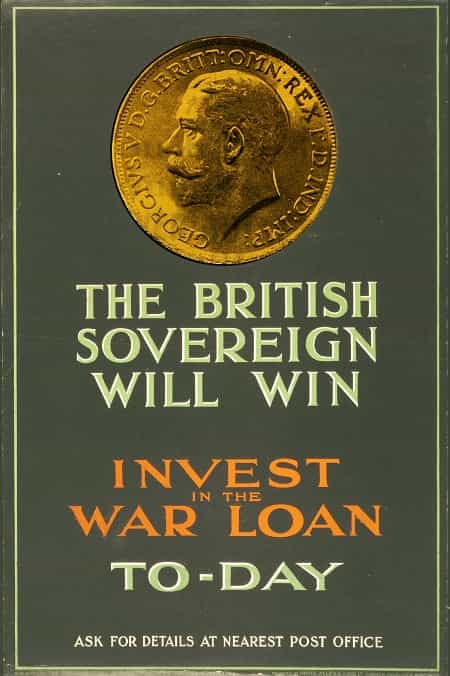First struck back in 1910, this vintage coin has grown in value and gained a following in the century since it was originally produced. Here is a look at the heritage and pedigree the King George V half sovereign represents, and the bright future it’s set to enjoy.


History of the King George V Half Sovereign
When King George V came to the throne in 1910, Britain was a global superpower, unknowingly sitting on a precipice of events that would eventually lead to the start of the First World War just a few years later.
This, in part, is the reason that the King George V half sovereign holds so much significance. It was quite literally the poster boy for the war efforts once the fighting had begun, forming an important part of the campaign to get people to invest in a war loan to bolster the finances of the nation as a whole. It was also used, along with the larger gold sovereign, to pay the countries war debts to the US.


The strong historical associations that the coin enjoys today have much to do with the way that gold coinage was changing in Britain when it was initially produced.
How to get the best possible price for your gold coins. Download our FREE 10 step guide here
The country was leading the world in terms of minting gold coins, so much so that economists and politicians alike were concerned about having such a large proportion of the gold in the country proliferated in this way.
Global reach
The sovereign was envisaged as becoming a gold coin with global reach, reinforcing Britain’s power and consolidating its influence worldwide. However, this half sovereign would be the last of its kind to enter general circulation, as the switch to bank notes began and fewer precious metals were used for coinage.
The final King George V half sovereign was struck in 1924, but its popularity during its time in production was enough to secure its lasting impact and collectability.
King George V Half Sovereign Design
This coin features Bertram Mackennal’s 

Future of the King George V Half Sovereign
As with many half sovereign coins, this King George V example is available in various quantities. Whether you are a collector looking for a single coin, or an investor who is interested in how it will appreciate over the years, there are options for you.
Enhanced profit potential
At the moment its value is equivalent to that of similarly aged half sovereigns, including the Queen Victoria half sovereign and the King Edward VII half sovereign. However, it is arguably a coin which has the opportunity to increase in value more consistently than its contemporaries.
The future appreciation of the King George V half sovereign will have a lot to do with how its historic significance is perceived in years to come. Its associations with the First World War, the golden age of British coinage and the eventual end of the general circulation of gold coins leave it in a great position to build a stronger reputation.
Collectable gold coins of this era have even been found squirrelled away for safekeeping in some unusual hiding places. This makes it a good idea to carefully plan where to store your investment.
Speak to us for gold coin investment guidance
If you are considering investing in gold coins which are valuable for their historic importance as well as their precious metal content, speak to Physical Gold’s expert advisors today. You can call us on 020 7060 9992 or use the contact form on our site to get an email response.


